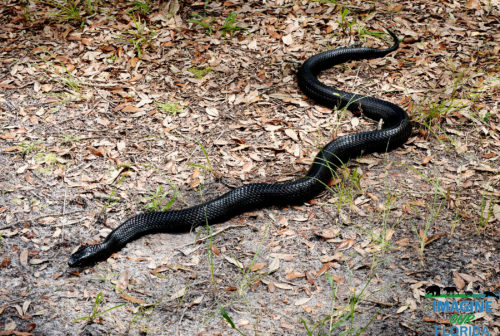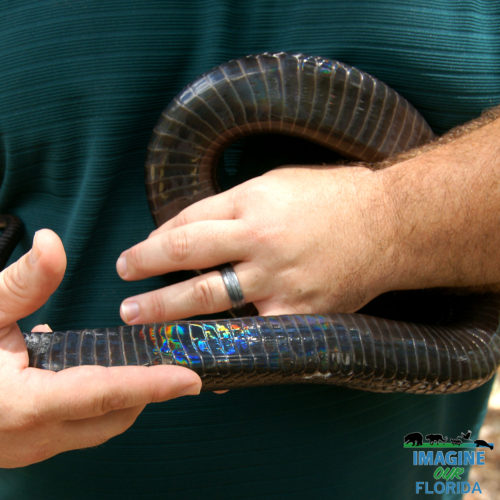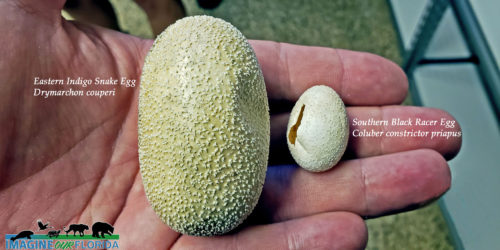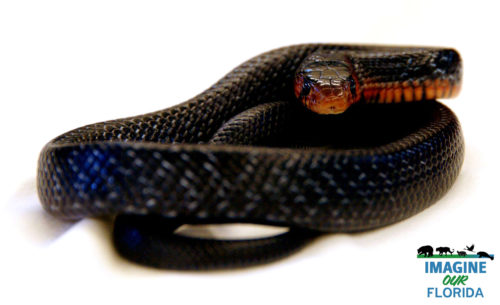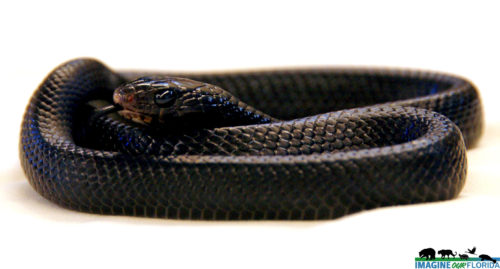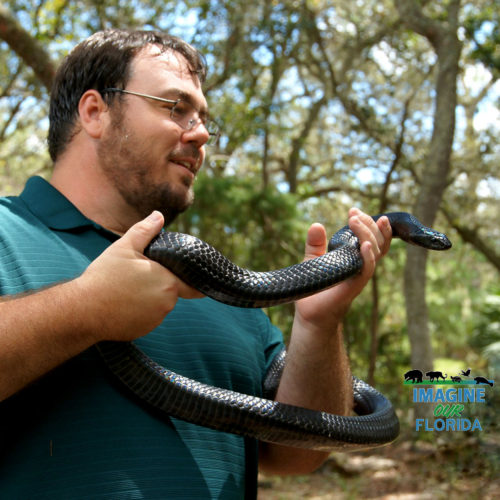Eastern Indigo Snake
Snakes! There are few animals that evoke the kind of emotions in people that snakes do. Some love them. Some hate them. Some are indifferent to them. Despite how you may feel about snakes, they play an important role in the ecosystems they inhabit.
Allow me to introduce you to the Eastern Indigo, Drymarchon couperi. The eastern indigo is the largest snake species in North America. Males can reach a length of 8.5 feet and up to 11 pounds (Females stay smaller, rarely larger than 6 feet)! The genus name Drymarchon translates to “forest ruler” and this species most certainly fits that bill!
They are heavy-bodied snakes with beautiful, iridescent black bodies. They often have some coloration on their chin, either white or red, but can also be solid black. Eastern indigo snakes can be found throughout Florida, the coastal plain of southern Georgia, and extreme south Alabama. Their historic range also extended into extreme southeast Mississippi but they have been extirpated from there. In Alabama, they have been reintroduced to the forests as part of an ongoing effort to recover this species (More on that in an exciting upcoming post). The panhandle population has also experienced an extreme reduction in numbers and efforts are underway to restore the population in those areas too.
The eastern indigo feeds on just about anything it can swallow. Mammals, birds, turtles, amphibians, fish, and even other snakes make up the average diet of this species. The indigo is not a constrictor. They kill their prey by overpowering them with their superior size and strong jaws, swallowing prey headfirst. Because of their preference for eating snakes, including venomous species, many people have left this species alone rather than removing them.
Eastern Indigos are big snakes. And big snakes lay big eggs! When a female lays a group of eggs, that group is called a clutch. The average clutch size is 7 eggs but can be as large as 12 eggs.
The indigo mates from October through February. Eggs are laid in May or June with hatchlings emerging in August and September. Little is known about egg sites for wild indigos but it is suspected the areas near gopher tortoise burrows are used.
This big snake needs big room. Scientists tracking wild indigos have found that their home range can be as large as 3,000 acres! This makes it clear that one of the biggest threats is to this species. They need space and lots of it!
The Eastern indigo is a threatened species across its entire range. One of the main reasons for their decline is the decline of the longleaf pine ecosystem. As the longleaf pine ecosystem was logged, fragmented, and altered by fire suppression, the animals that rely on it also declined. Gopher tortoises are important to many species, including indigo snakes. Indigos seek shelter in the burrows of the gopher tortoise and as tortoise populations have fallen, so has the indigo population.

